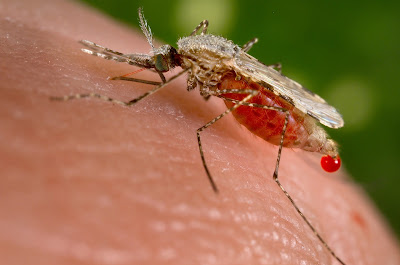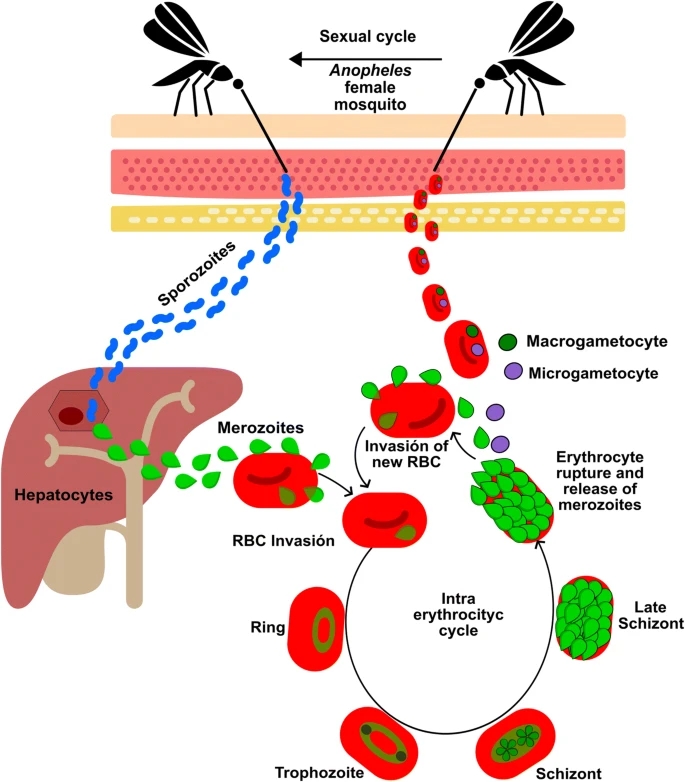By Dr. Ariyana Love, N.D.
In a recent interview with Maria Zeee on Zeee Media, I discussed another very troubling discovery about the mRNA bioweapons technology. Maria Zeee asked me to shed more light on the Doherty Institutes involvement with the US biolabs in Ukraine.
Russian reports revealed that 350 cryocontainers with blood serum samples were transferred from the Public Health Centre of the Ministry of Health of Ukraine to a reference laboratory for infectious diseases at the Doherty Institute in Australia.
Under the guise of tackling Placental Malaria, the Doherty Institute has been directly involved in research using insects such as mosquitos and tics as bioweapons carriers. The Doherty Institute also developed a “vaccine” that uses a parasite to target the placenta of pregnant women to abort their babies in utero, under the pretext of “antibody research”.
During the testing of this novel technology, mosquitos were developed as carriers of a genetically attenuated parasite called the P. falciparum which is the most deadly of the 5 Malaria causing parasites. The World Health Organization (WHO) and the U.S. Government were also directly involved in this research to “immunize” via mosquito bite using radiation-attenuated Sporozoites.
In May of 2021, a Bill Gates-funded firm began releasing genetically modified mosquitoes in the wild.

Clinical trials conducted by the WHO in 2020, used 11 human volunteers who were “immunized” with more than 1000 bites by irradiated mosquitos infected by Sporozoites (Spz) from the P. falciparum NF54 strain or 3D7/NF54 clone.
The female Anopheles mosquito inject a minimum of Sporozoites (Spz) (~ 100) during its bite. It was tested on adolescents, children and infants aged 6 months old. 1 out of the 6 volunteers developed parasitaemia 12 days after exposure. Parasitaemia means parasites in the blood.
The parasite “vaccines” use radiation-attenuated Sporozoite, administered under drug coverage. Genetically-attenuated Sporozoite “vaccines” and recombinant protein “vaccines” (RTS,S and R21) and recombinant viral vectors “vaccines” (Chad63 MVA ME-TRAP, CSVAC, ChAd63 METRAP and MVA METRAP with the matrix-M adjuvant) are all used.
Sporozoite recombinant proteins, DNA or viral vectored protein fragments (mRNA) and attenuated Sporozoite “vaccines” induce malaria reactive CD4+ and CD8+ T-lymphocyte counts. Radiation-attenuated Sporozoite (RAS), genetically-attenuated parasite (GAP) and Sporozoite are administered under drug coverage, according to the WHO study. Here’s another WHO study from 2021.
By 2021, they had a P. falciparum Sporozoite (PfSPZ) “vaccine” as the main candidate containing live, radiation-attenuated, whole, aseptic and metabolically active Sporozoite which have been isolated from the salivary glands of mosquitos infected by P. falciparum. They tested their novel “vaccine” on infants in Kenya.
Another study conducted by the NIAID in 2022, used Malian children 6-10 years old and injected them with three doses of the PfSpz “vaccine” to induce an “infection” by “parasitic disease” of a “vector borne disease” using the P. falciparum.
Another study in 2021 carried out by the U.S. Government, experimented on 336 infants aged 5-12 months, in Kenya, inoculating them with the P. falciparum “vaccine”. This is not in fact a “vaccine” but a weapons system for the murder of babies in utero and this is a bioweapon which is transmissible to others, according to the WHO research.
In addition, the WHO’s P. falciparum research helped in the development of monoclonal antibodies. In fact, the P. falciparum parasite is a critical component in the monoclonal antibodies bioweapon system.
Please also see: Monoclonal Antibodies Is Experimental Gene Therapy – Patent Review
PATENT
The PRIMVAC “vaccine” candidate was in government trials in 2016. By 2020, the PRIMVAC “vaccine” adjuvanted with Alhydrogel was in clinical trials. The Alhydrogel patent shows unsafe levels of aluminum and other heavy metals.
A VAR2CSA plasmodium falciparum erythrocyte membrane protein 1 (PfEMP1) patent for a synthetic protein was registered in December, 2014. The VAR2CSA “vaccine” is owned by the U.S. Government.
The CDC is also involved in this VAR2CSA bioweapons development.
STERILIZATION OF THE NATIONS
Children’s Health Defence reported in August that the Covid-19 injections are dangerous for mothers and babies. According to former Chief Scientist of Pfizer, Dr. Mike Yeadon, the injected ingredients is building up in the ovaries and attacking the placenta of pregnant women.
A preliminary findings of mRNA Covid-19 vaccine safety in pregnant persons found that 4 out of 5 pregnant women are loosing their unborn baby to spontaneous abortions.
A recent report released in March of this year, shows that fetal deaths due to “covid vaccines” are almost 2,000% greater than deaths associated with other vaccines.
Below are a few highlights from the WHO study Plasmodium falciparum pre-erythrocytic stage vaccine development that I want to draw your attention to.

RECOMBINANT VIRAL VECTOR “VACCINES”
“Viral vectors represent promising tools for vaccine development, because they enable intracellular antigens to be expressed by increasing the ability to generate robust cytotoxic T-lymphocyte responses and proinflammatory interferon and cytokine production without the need for an adjuvant. However, there is great concern regarding their genotoxicity due to possible viral genome integration; this has led to many efforts aimed at finding a high level of safety and efficacy.”
“Several viral, bacterial, and parasite vectors have been used in anti-malarial vaccine candidates; currently, many clinical trials are exploring their advantages to increase their potential and accelerate their use in vaccines.”
CHAD63 MVA ME-TRAP
“This anti-malarial vaccine was developed using chimpanzee adenovirus 63 (Chad63) and modified Vaccinia virus Ankara (MVA) into which were inserted genes encoding the thrombospondin-related adhesion protein (TRAP) multiple epitope (ME) chain.”
“The ME-TRAP hybrid is thus a 2398 base pair (bp) insert encoding a single 789 aa-long peptide, covering the complete P. falciparum TRAP sequence, fused to a chain of 20 malaria T- and B-cell epitopes (14 targeting MHC class I, 3 MHC class II and 1 murine).”
PCR
“A trial involving adults in Senegal to assess vaccine efficacy using a polymerase chain reaction (PCR) assay was able to detect > 10 parasites/μl blood. PCR was positive for 12 out of 57 participants vaccinated with ChAd63 ME-TRAP with a booster dose of MVA ME-TRAP and 13 out of 58 control patients who received an anti-rabies vaccine were positive by PCR, giving 8% efficacy (which was not statistically significant). They thus grouped the results with the 67% efficacy obtained in a study in Kenya and, using Cox regression, showed 50% overall vaccine efficacy in both populations.”
CSVAC
“CSVAC, a vaccine from Chad63 and MVA to encode the P. falciparum CS protein, continued such line of research into plasmid DNA anti-malarial vaccines; the CS insert was a codon-optimized cDNA encoding the CS protein truncated at the C-terminal extreme thereby lacking 14 C-terminal aa and thus omitting the GPI anchor.”
FUTURE DIRECTIONS
“Nanovaccinology” with Self-Assembling Protein Nanoparticles (SAPNs)… The next major challenge concerns the host’s genetic variability and parasite proteins’ interaction with the human immune system.”
“The choice of antigen to be used is quite complicated due to factors such as the parasite’s complex life-cycle involving two reproduction cycles (sexual and asexual), different development stages and two hosts (the Anopheles mosquito and human beings). All this can be added to the multiple invasion routes described so far for each of its target cells (hepatocytes and/or erythrocytes), the parasite’s ability to modify its gene expression and the genetic variability between P. falciparum circulating strains.”
“The next major challenge concerns the host’s genetic variability, particularly major histocompatibility class II (MHCII) complex molecules exerting their mechanism by synthesizing proteins encoded by the HLA-DR regions β1*, β3*, β4* and β5* where the HLA-DR β1* region encodes more than 1500 genetic variants grouped into 16 allele families called HLA-DRβ1*01, *03, *04, *07, etc. Parasite proteins’ interaction with the human immune system should be analysed by predicting B and T epitopes (using NetMHCIIpan 3.2 or other predictors).”
UPDATE: 6/6/2022
Please see: Pfizer’s mRNA Vaccine Goes Into Liver Cells and Is Converted to DNA: Study
